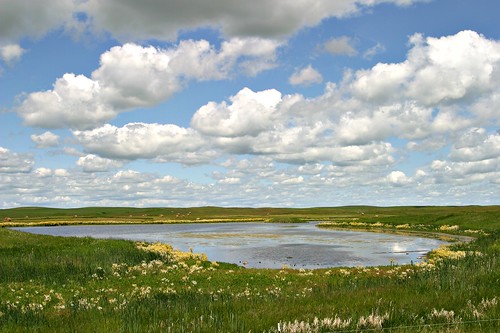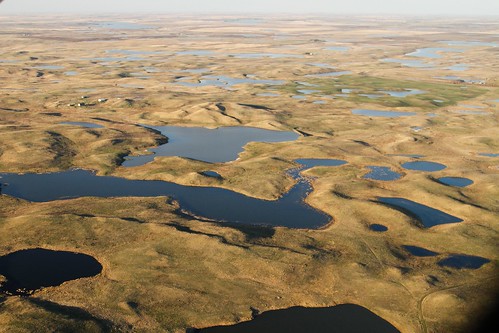
The Prairie Pothole Region of North Dakota, South Dakota and Montana provides sanctuary to millions of nesting waterfowl each summer. With an innovative partnership led by Ducks Unlimited (DU), USDA is helping to provide new opportunities for agricultural producers in the region to sequester carbon while cultivating new revenue streams.
With the help of a grant from USDA’s Natural Resources Conservation Service, these partners have created a carbon credit system for private landowners in North Dakota who agree to avoid tillage of grasslands. Grasslands store carbon dioxide, one of the leading greenhouse gases contributing to climate change.
The North Dakota Prairie Pothole project, funded by a USDA Conservation Innovation Grant (CIG) of $161,000, provides potential new revenue streams for landowners while avoiding greenhouse gas emissions and increasing carbon sequestration.
This project in the Prairie Pothole Region is preserving critical wildlife habitat while changing the future of farming. The Climate Trust, American Carbon Registry, The Nature Conservancy, Environmental Defense Fund and Terra Global Capital helped support the project.
The partnership worked to develop the necessary tools for grassland owners to document their efforts and receive compensation for carbon storage. In order to measure carbon offsets, the partners developed the Avoided Conversion of Grasslands and Shrublands offset quantification methodology recently approved by the American Carbon Registry. This methodology provides producers with a template for quantifying and verifying their carbon reductions. Voluntary carbon reductions, in the form of carbon credits, can be sold into voluntary carbon markets.
“With high commodity prices, it can be economically attractive for farmers and ranchers to plant row crops on marginal agricultural lands,” said Adam Chambers, NRCS air quality scientist. “Carbon credits provide landowners with another working lands opportunity and an additional revenue option.”
“Rural communities will not only benefit from project payments, but could also see economic benefits from outdoor recreation opportunities on grasslands, attracting hunters, photographers, and other nature enthusiasts from across the country,” said Steve Adair, director of DU’s Great Plains Region. “Research has shown the economic benefit of wildlife provided from grasslands is estimated at $63 per acre. This equates to money-in-hand for these rural populations.”
“The NRCS Conservation Innovation Grant was the true catalyst that helped jumpstart this project and brings a number of multidisciplinary partners together,” said Eric Lindstrom, Ducks Unlimited government affairs representative.
Land enrolled in the project is required to remain un-tilled; however, the land can be set aside for conservation purposes or be utilized as working lands for grazing and haying. Ranchers can graze animals and even establish plant pollinator habitat or enhance forage quality that doesn’t disturb the soil’s carbon stores.
“Basically, you’re farming carbon while running a normal diversified agricultural operation,” said Chambers. The grasslands of the Prairie Pothole Region have tremendous potential to store carbon in soils and biomass, which reduces the levels of carbon dioxide in the atmosphere, one of the leading greenhouse gases contributing to climate change, Chambers said.
“This project provides Northern Great Plains producers with new ways to earn income from conservation activities, expanded opportunity for outdoor recreation and an opportunity to create jobs in their communities,” said Undersecretary for Natural Resources and the Environment Robert Bonnie. “Our partnership with Ducks Unlimited helps preserve a treasured national landscape, while also reducing greenhouse gas emissions.”
To read more about the partnership, click here.



